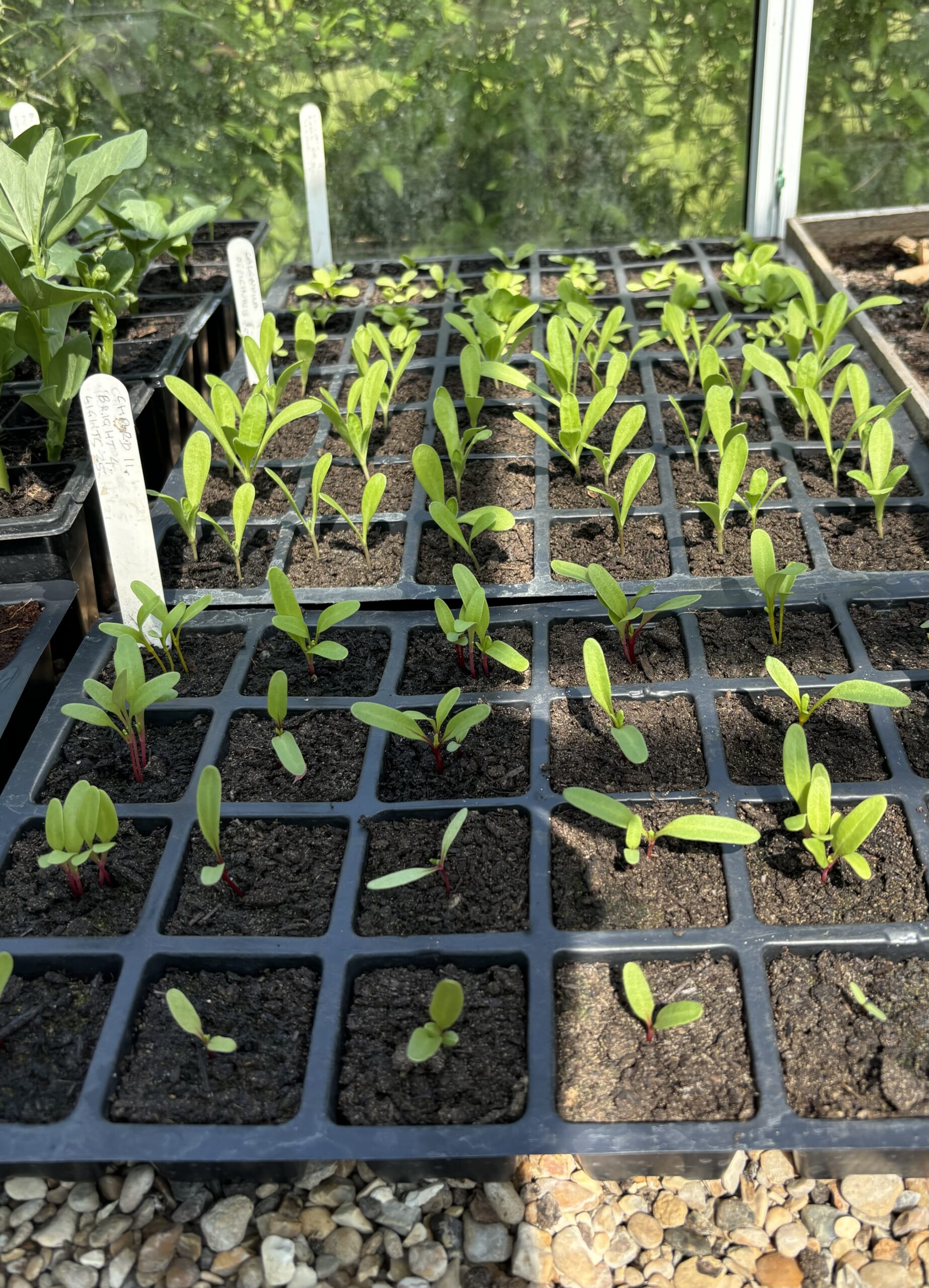A feature of this spring has been high temperatures during the day which have dropped considerably at night and drought conditions; it’s been something of a challenge but an opportunity for new learnings. When it happens again, I will definitely start sowing crops in modules in the greenhouse much earlier, once it becomes apparent that germination is slow and erratic outdoors, rather than wait in the vain hope that conditions would soon become favourable. The main problem was not high day temperatures but the fact that they plunged to low single figures at night, with the loss of radiated heat from the ground one factor which made germination erratic. It’s early May, and temperatures are in the 20’s C yet they are set to plunge again next week, so there are more challenges to come. I also intend to increase the number of water butts in the garden. You can capture rain from the greenhouse in style with https://hartley-botanic.ie/product/water-butts/
If you are planting tomatoes directly into greenhouse borders, fork in well-rotted organic matter like home-made compost, allow it to settle and water well before planting. Pick out any large lumps of compost or un-rotted material before adding it to the border.

Warm compost in a propagator or leave it for 24 hours in your greenhouse before sowing outdoor cucumber, marrow, squashes, pumpkins, melon and watermelon (I am trying them for the first time, this year) individually in clean 7.5cm pots plus French and Runner beans and Sweetcorn in gentle heat in peat free multipurpose compost in a propagator at around 20C, label and water with tepid tap water. They will germinate quickly. Resow any earlier crops that were lost.
Start feeding Cacti and succulents and citrus, hand pollinate nectarines, peaches and early strawberries in pots or greenhouse borders, transferring pollen from one flower to another using a soft artists paintbrush.
Stand water in the greenhouse to warm for 24 hours before use and remember to water seedlings using tap water only.
Continue to prick out and pot on seedlings, gradually increasing the pot by one or two sizes each time until they reach the final pot size or are large enough to ‘harden off’ outdoors and transplant. (Don’t put a small plant into a big pot and hope that it grows into it as the roots are likely to rot).
Pot up plug plants into small pots as soon as they arrive, label with the name and date of sowing and water them well. Repot on a cloudy day if you can or shade them for a few days under newspaper or fleece until the plants establish. Buying larger plants like aubergines and peppers, from the garden centre for earlier cropping saves space in the greenhouse for earlier seed sowing, but obviously cost more.
Keep a look out for glasshouse red spider mite, whitefly and other pests, check the underside of leaves and treat with environmentally friendly sprays before infestations become established. Increase the humidity around plants by misting with soft tepid water to discourage red spider mite which dislike dry air. Planting French marigolds in the greenhouse discourages whitefly but this should be done before, not after, an infestation occurs. Take care, stay well and happy greenhouse gardening, Matt.


